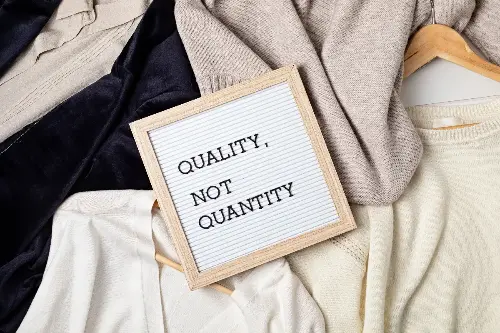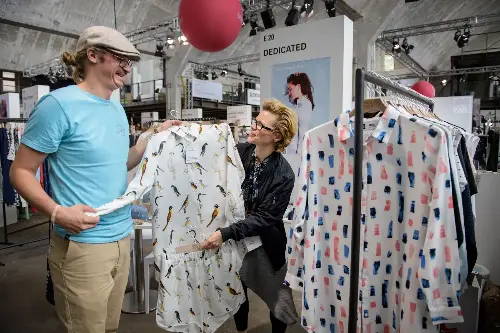In the bustling world of fashion, the trend towards sustainability is not just a fleeting style statement but a vital movement towards environmental stewardship and ethical responsibility. However, the journey towards making greener choices can be thwarted by the overwhelming presence of misleading labels and confusing marketing jargon. Let's demystify the process and arm you with knowledge to make informed, eco-friendly fashion decisions.

Understanding Sustainable Fashion
Sustainable fashion refers to clothing that is designed, manufactured, distributed, and used in ways that are environmentally friendly and ethically sound. This holistic approach covers a broad spectrum from the sourcing of raw materials to the longevity of the garment.
Materials often speak volumes about the sustainability of a garment. Organic cotton, recycled polyester, and Tencel are among the more popular eco-friendly materials. Organic cotton is grown without harmful chemicals, preserving soil health and supporting water conservation. Recycled polyester reduces waste by repurposing existing plastic, and Tencel, derived from sustainably sourced wood pulp, boasts an environmentally responsible production process.
Another facet of sustainable fashion is ethical manufacturing, which ensures fair wages, safe working conditions, and rights for workers. Brands committed to these practices often provide transparency through detailed reports and third-party certifications.
Spotting Misleading Labels
With the rise of eco-conscious consumerism, 'greenwashing'—a t term used to describe misleading claims about environmental benefits—has become a prevalent issue. Labels like 'eco-friendly', 'green', or 'natural' are often thrown around loosely without substantiation. To truly shop sustainably, one must look beyond these labels.
Certifications can serve as a reliable guide. Look for established certifications like the Global Organic Textile Standard (GOTS), which covers both ecological and social criteria, or the Fair Trade certification, which focuses on labour conditions. The Blue Angel, and Energy Star for energy-saving electronic components in wearables are also noteworthy.

Lifecycle and Care
The environmental impact of a garment also involves how long it lasts and how it is cared for. Opting for high-quality, durable pieces over fast fashion items can reduce waste significantly. Repairing and upcycling clothes instead of discarding them can also extend their life and lessen environmental impact.
Care labels inside garments provide valuable information on how to properly maintain your clothes, which can prolong their lifespan. For instance, washing clothes at a lower temperature can save energy and prevent fabric damage. Similarly, air-drying instead of using a tumble dryer can reduce carbon footprint.
Innovations in Sustainable Fashion
Innovation is key in pushing the boundaries of what's possible in sustainable fashion. New technologies are bringing about materials that not only reduce dependence on natural resources but also offer recyclability and biodegradability. Piñatex, made from pineapple leaf fibre, and Mylo, a mushroom-based leather alternative, are prime examples of innovative materials that are both sustainable and cruelty-free.
Brands are also exploring digital fashion, which includes virtual clothing to be worn in digital environments, cutting down on physical waste entirely. Though in its nascent stages, this concept represents a shift towards reducing the fashion industry's material footprint.

Supporting Sustainable Fashion
Supporting sustainable fashion isn't just about buying from the right brands; it involves a shift in consumer mindset. Embracing a minimalist wardrobe, investing in versatile pieces that offer multiple styling options, and choosing quality over quantity all contribute to a more sustainable wardrobe.
Second-hand shopping and clothing swaps are also excellent ways to participate in the circular economy, keeping garments in circulation and out of landfills. Moreover, these practices can challenge the fast fashion model and contribute to a decrease in overall clothing production.
In conclusion, navigating the world of sustainable fashion requires a keen eye and a deep understanding of what truly constitutes an environmentally friendly garment. By educating ourselves about the materials, labels, and practices that define sustainable fashion, we can make choices that align more closely with our environmental values. This not only benefits the planet but also enriches our lives by connecting us more closely with the clothing we choose to wear. Remember, each sustainable purchase is a step towards a greener future.
